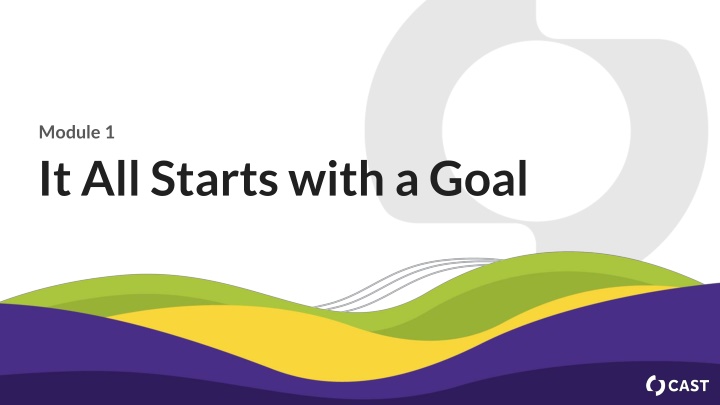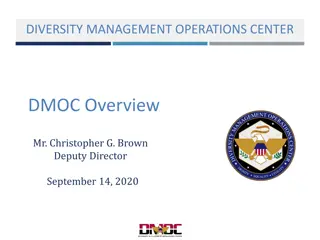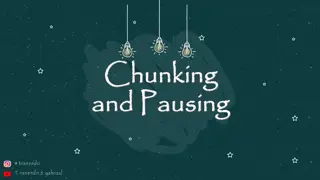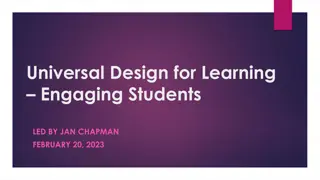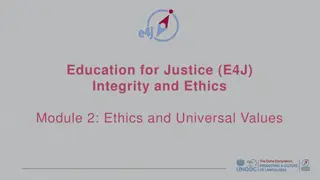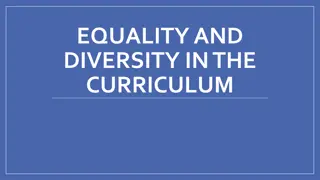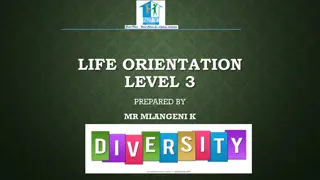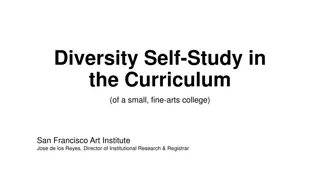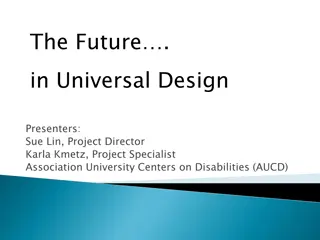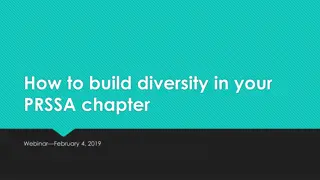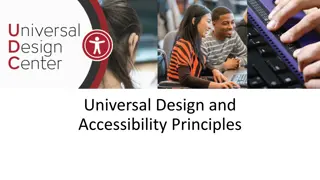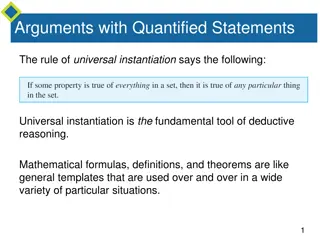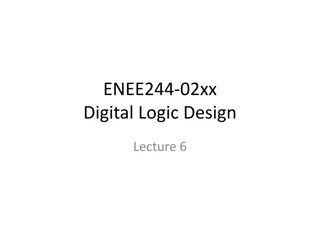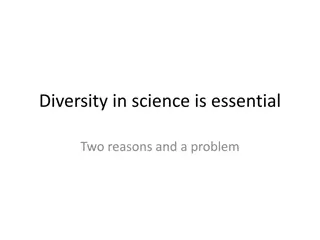Universal Design for Learning: Embracing Diversity in Education
Embrace the fluidity of language and diverse learning experiences within the Universal Design for Learning framework. Celebrate learning differences and accessibility. Explore additional technologies to enhance the learning experience, promoting inclusivity and respect for individuality.
Download Presentation

Please find below an Image/Link to download the presentation.
The content on the website is provided AS IS for your information and personal use only. It may not be sold, licensed, or shared on other websites without obtaining consent from the author.If you encounter any issues during the download, it is possible that the publisher has removed the file from their server.
You are allowed to download the files provided on this website for personal or commercial use, subject to the condition that they are used lawfully. All files are the property of their respective owners.
The content on the website is provided AS IS for your information and personal use only. It may not be sold, licensed, or shared on other websites without obtaining consent from the author.
E N D
Presentation Transcript
Module 1 It All Starts with a Goal
Creative Commons Resource created by CAST and licensed under a Creative Commons Attribution-NonCommercial-NoDerivatives 4.0 International License. All other rights reserved related to third party content. Resource contact: workforce@cast.org.
Language We recognize that language is fluid and evolves over time to reflect the influence of the society and culture we each live in. We also recognize that our personal experiences are unique, and they too influence the way we interpret and use language. Throughout these modules, we use the term learning difference to refer to the variability each person brings to the learning environment and which we want to celebrate and support with UDL. We also want to acknowledge the many contributions of the disability rights community. In that spirit, we will use the terms learning difference and learning disability interchangeably and lean toward disability when we are referencing specific laws or the disability rights movement. Our intention is first and foremost to show respect for person. We encourage you to consult with your adult learners and to use the language that is most welcoming and respectful to them.
Accessibility Statement CAST is committed to accessibility as a foundational component of the Universal Design for Learning framework. In developing the content for these modules, we followed accessibility best practices informed by the Web Content Accessibility Guidelines (WCAG), the international accessibility standard. For example, we provided alternative text for the images and captions for any embedded videos and checked for color contrast. We want to make sure you gain the best learning experience possible. Should you encounter any accessibility or usability barriers as you navigate the course content, please contact us at workforce@cast.org. This course is delivered through the LINCS Learning Portal. Should you encounter any accessibility challenges related to the design of the LINCS Learning Portal, please contact the LINCS team.
Additional Technologies The option to resize text is available in most browsers with a keyboard shortcut: Control (or Command on the Mac) and + (plus) to zoom in Control (or Command on the Mac) and - (minus) to zoom out Control (or Command on the Mac) and 0 (zero) to reset the zoom level to the default (100%). You can also find these options in the browser's menus, usually under View. Along with other display options, a read-aloud feature is now built into many operating systems and can be configured in the system preferences. To learn more about these options, visit the Personalizing the Reading Experience page on the AEM Center website at CAST.
Free Feature-Rich Screen Readers Should you need to use a more feature-rich screen reader to access the content, several free options are available: VoiceOver is built-in on Mac computers and iOS devices such as the iPhone and iPad Narrator is built-in on Windows computers and tablets, and NVDA is available as a free download ChromeVox is available on Chromebooks TalkBack is built-in on Android phones and tablets, and a version of it is also available on Amazon s Fire tablets (called VoiceView)
Background Knowledge (1 of 3) Each module has been designed using the Universal Design for Learning (UDL) framework. We have included the following videos, definitions, and resources to help you understand the overall goals of the project and to ensure you have the context and content you need to understand the material: Universal Design for Learning (UDL) is a research-based framework that reduces barriers to learning by providing flexibility in the ways learners can engage with, perceive, and demonstrate understanding. The UDL guidelines are a tool filled with concrete steps educators can use to make use of the framework. Video Title: OCTAE & CAST: Improving ABE Duration: 1min 23sec Downloadable Transcripts
Background Knowledge (2 of 3) Language: We recognize that language is fluid and evolves over time to reflect the influence of the time and culture we each live in. We also recognize that our personal experiences are unique, and they too influence the way we interpret and use language. Throughout these modules, we use the term learning difference to refer to the variability each person brings to the learning environment and which we want to celebrate and support with UDL. Video Title: Travis Combs Explains Key Project Goals and Outcomes Annotated Bibliography: This document contains the initial list of references the team analyzed to develop these modules. While they may not be directly cited in the modules, they informed the creation of the content. Duration: 1min 50sec Downloadable Transcripts
Background Knowledge (3 of 3) Voices from the field: The videos in this playlist appear here and throughout other modules in this series. They include interviews with ABE learners, educators, experts and administrators. Please feel free to use these CAST created videos under a Creative Commons Attribution- NonCommercial-NoDerivatives 4.0 International License. All other rights reserved related to third party content. Resource contact: workforce@cast.org. Key organizations: Consider becoming a member of these key organizations. By attending conferences and reading relevant new literature you can constantly improve your teaching practice and collaborate with other educators in your field: Coalition on Adult Basic Education and Council for Adult and Experiential Learning.
1. Introduction 1. Introduction In alignment with how adults learn, this online module is designed to be immediately relevant, transparent in its purpose and criteria for successful completion, and inquiry-based. You can choose to access additional tips, materials, and resources throughout the following sections; or you can proceed directly through the main module content and dig into these additional opportunities at the end. Chunking information this way is intended to support your comprehension while sustaining your effort and persistence through the module to completion.
Module Structure You'll find Key Ideas, Pro Tips, Try it Yourself, and Resources linked throughout the text. All linked materials are gathered, along with References, in Section 4. This way, you can choose to learn more in the moment, or wait until you've completed the core content. This module is structured into six sections. 1. Introduction 2. Challenge Goal setting is incredibly important, especially for Adult Basic Education (ABE), learners who come into the classroom with a range of backgrounds, skills, and educational experiences. Regardless of their motivations, however, adults who can set clear goals such as, help my children or get a better job are more likely to persist in ABE programs. Once you finish this module, you will feel better equipped to develop and teach a wide range of learners to create and monitor meaningful, obtainable goals. 3. New Learning 4. Wrap-Up 5. Assessment Additional Resource: Learn more about our inspiration, How People Learn Framework and the STAR Legacy Model
Module Goals Our Purpose: The purpose of this goal is to identify and model the positive impact clear, learner-centered goals have on engagement and access for all learners in ABE classrooms. Your Task: Your task is to reflect on how you currently set learning goals in your classroom and identify ways you could improve goal setting by using Universal Design for Learning strategies and supporting your students in setting their own goals. Wrap Up: During the final sections of this module, you will be asked to review your initial understanding of goal setting, by comparing what you thought first to what you think now. Through this process you will be better equipped to design learning goals that increase engagement, understanding, purpose, and access to learning for adults.
Before You Start: Lets Try Something This module is all about goal setting. So, before you do anything else take a moment and create some goals based on what you want to achieve in your personal/family life and your working life. Be very specific when stating your goals. My personal life or family goals: How did it feel to write these goals? In two weeks: In three months In one year My working life goals: Was it harder than you anticipated? Did you struggle more with the long- or short-term goals? Keep these feelings in mind as you move through this module. In two weeks: In three months In one year
2. Challenge 2. Challenge The purpose of this module is to show how goal setting can increase learner engagement and purpose in ABE classrooms for both the educator and the learner. You will also learn about UDL strategies and supports to help adult learners overcome barriers to developing and achieving their goals. To do this we are going to consider a problem or challenge in the form of a case study. A case study is a teaching tool educators use to introduce concept by sharing a real- world situation. After hearing the case-study we will ask you some questions. The goal to help you explore how you would solve the challenge using information you already know and background information you already have. At the close of the module, we will remind you of the challenge and ask you to reflect on your initial responses to see if you have changed your thinking or might incorporate any of the new material you learned in the module. Make sure you keep track of your first ideas. Use pen and paper, digital note-taking, or a video or audio recording of your thoughts; whichever allows you to best reflect.
Case Study: Trauma & Goals In this video Kathy Olesen-Tracey, Senior Director for Adult Education and Family Literacy, Illinois Community College Board, shares that well over 80% of learners in Adult Basic Education have experienced trauma. Kathy believes that creating the right environment where learners feel supported and heard is critical to goal setting. Kathy believes that trauma informed teaching directly impacts learner persistence and engagement. Video Title: Kathy Olesen-Tracey and Trauma in ABE Learners Pro Tip: Use case studies in your instruction. Duration: 1min 56sec Downloadable Transcripts
Here's Your Challenge How have you seen trauma impact the ability of the learners in your classroom to set goals? What strategies do you use to ensure learners are engaged in the goal setting process and don't leave the program (put their head down on the desk and check out or stop attending)? If you asked the learners in your classroom what barriers prevent them from achieving their goals do you think their response would be the same as yours? Why or why not? Video Title: Kathy Olesen-Tracey and Trauma in ABE Learners Duration: 1min 56sec Try it Yourself: Use case-based learning Downloadable Transcripts
3. New Learning 3. New Learning This section introduces the importance of goal setting and how you can create an environment where learners feel safe to set goals. This module will further identify how you can use the tangible strategies in the Universal Design for Learning (UDL) framework to design instructional goals and help your students learn how to set and accomplish their own goals.
Key Idea: Adult learners need support to design effective goals. Adult Basic Education (ABE) learners are more likely to persistence and achieve their academic goals if they have support setting goals and reflecting on the progress they make in class. Adults need help in the classroom with setting, prioritizing, organizing, carrying out, monitoring, and evaluating goals.
A goal without a plan is just a wish. -Antoine de Saint-Exupery Instructors can help adult learners persist by making teaching them how to make plan and by cultivating awareness that learning something new is process that involves: Goal setting and task analysis Selection of strategies for learning Monitoring of progress and reflection, with revision as needed to see growth Adult learners may get frustrated if they don't have the skills to study, or if they expect to learn something and never forget it. Helping ABE learners see how goals fit into the process of learning can help alleviate fear and reduce frustration. Remember, the primary incentive for learner persistence is the learner s ability to set a goal and see progress in reaching that goal. Additional Resource: Kent ISD, Setting Goals
Help Learners Understand the Impact of Goals Goals provide focus Goals motivate Goals transform Adult learners often struggle to set targeted goals. They often articulate a hope or wish, as a goal but without a clear goal and an understanding of the steps needed to achieve it they can get feel frustrated and waste energy and effort on activities that have no long- term significance. Long-term goals such as passing the GED inspire adults to persist inspire of setbacks, while short term goals, such as learning how to write an essay can be used to keep learners working toward the vision. When learners see progress in achieving both long and short-term goals it will have a positive impact on building self-esteem. By sharing goals and reflecting on the accomplishment of goals in ABE classrooms learners can also positively impact, inspire, and transform their peers, as well. Pro Tip: Make sure adult learners understand the "why" of goal setting
Celebrate Short-Term Goals Educators should draw learners' attention to the goals of each lesson As ABE teachers it is important to remember to align goals with "proximal challenges." This means goals should be set close to the learning event. For example, if the goal of a lesson is to learn how to calculate fractions a proximal challenge might be "identify the denominator and numerator in a fraction." Once this goal is accomplished, educators should take the time to stop and celebrate with the learners. Doing this will model for learners how to set short-term goals and will build self-esteem which increases persistence towards longer goals. Pro Tip: Celebrate the accomplishment of small goals. Try it Yourself: Set goals with your adult learners
Key Idea: Learners goals should drive instruction. The primary incentive for learner persistence is the learner s ability to set a goal and see personal progress toward reaching that goal. Learners' goals should therefore connect to and guide instruction.
Guide Learners to Identify Their Own Goals Goals created by the students usually relate to personal growth. and may or may not be directly related to the course (Paige-Voth & Graham, 1999). However, it is imperative that one of the first activities instructors do with ABE learners is to help them identify and set their own goals. You should use these goals to develop your instructional goals and continuously revisit how the instructional goals help the learner achieve their personal goals. This will increase learner persistence and reinforce the academic learning. Try it Yourself: Set goals with your adult learners
Creating SMART Goals Teach learners how to set SMART goals. Specific the goal is clearly defined and contains sufficient details Measurable you ll be able to test/know if you ve met them Action-oriented there are clearly defined steps you ll take to get there Realistic they are reasonably reachable within the parameters set Time-bound there is a set deadline by which the goal will be achieved Try it Yourself: Show adult learners the video about smart goals
Use Templets to Guide Goal Setting Learners who are new at setting goals will benefit from using templates. Setting goals can feel overwhelming at first. The use of a template can simplify the process and provide a structure for goal setting. The Adult Learner Goals Toolkit below provides activities and templates for goal setting. Remember you can always revise the instrument, if needed or desired, to suit your learners needs and/or the instructional content. Almost all instruments can be adapted for ABE/ASE/GED or ESL. Pro-tip: Use goal-development templates Additional Resource: Adult Learner Goals Toolkit Try It Yourself: Use the Goals Toolkit templates with your ABE learners
Key Idea: Trauma can create a barrier in goal setting. Students don't always know they have a trauma history. However, trauma and other adverse experience such as being teased in school, having an undiagnosed and thus unsupported learning disability, or failing to progress through school in a traditional manner can impact learners' ability to set goals. It is important to remember that even the instructional goals themselves could contain barriers.
Trauma and Goal Setting All students, but especially those with learning differences will need help understanding the impact that their life experiences could have on their ability to set goals. But don't worry, you don't need to become an expert on trauma to help. Instead, focus on creating a safe learning environment and be transparent with learners about the impact trauma can have on goal setting and motivation. For example, explain to learners that trauma causes individuals to experience feelings that life is uncontrollable or unpredictable. Overtime, feelings of helpless negatively impact a person's ability to set and follow through with a goal. As the instructor you can mitigate the impact of trauma by building students' feelings of control. Helping learners set and then monitor and celebrate accomplishing small goals will build self-esteem and reduce feelings of fear and helplessness
A Safe Learning Environment Fosters Goal Setting In this video Kathy talks about the importance of creating a safe learning environment and how it will benefit all learners. Reflect on your classroom: How can you make the learning environment safe for learners who don't have experience setting goals? Do the students in your class understand the impact of trauma? Video Title: Kathy Olesen-Tracey and Safe Environments for ABE Learners Duration: 2min 44sec Additional Resource: Goal-Setting Vocabulary Downloadable Transcripts
Identify Goals Learners Have Already Accomplished Everyone has accomplished some goals in their life. You can help all learners, but especially adults with learning differences feel more comfortable setting goals by identifying goals they have already accomplished. Doing this can reduce barriers and inequities some learners have in background knowledge that is critical to setting goals. However, there are also barriers for learners who have the necessary background knowledge but might not know it is relevant. Those barriers can be reduced when options are available that supply or activate relevant prior knowledge, or link to the pre- requisite information elsewhere. Try It Yourself: Use KWL methods to reflect on learning goals Additional Resource: The Amazing World of Teaching, KWL Charts
What is Vulnerability and How Does it Support Learning? In this video Bren Brown explores the concept of vulnerability in the classroom and daring classrooms . She asks: Is courage something that is inherent in us or is it something that we can teach or develop in people and ourselves? Vulnerability is one of the Four Pillars of Courage, which she outlines in this video. And reinforces that vulnerability can be taught and challenges the idea that vulnerability is weakness. Video Title: Bren Brown Daring Classrooms SXSW EDU (Transcript available in video link) Watch the video to learn more about vulnerability. As you watch note sections you might consider sharing with your adult learners. Duration: 33min 33sec
Vulnerability is Connected to Goal Setting Creating environments where people can be vulnerable is essential for learning, but for people who have experienced trauma or adverse childhood experiences be honest about what goals you want to achieve can be extremely frightening. Admitting that you want to earn your GED, even though you dropped out of school, or telling other people that you want to learn how to read, is not easy. It can bring up feelings of uncertainty, loss, heartbreak, or unworthiness. You can help your students set and achieve their goals by acknowledging how difficult it is to be vulnerable and by teaching them the power of vulnerability. talk about the importance of creating classrooms where learners feel safe to have "real, honest, respectful conversations. Try it Yourself: Two activities you can bring into your classroom to encourage honest goal setting
Key Idea: Proactively designing instructional goals can increase persistence and learner success. ABE students frequently have a history of struggling to accomplish goals. By keeping some key ideas in mind when designing instructional goals, you can improve learners understanding of the course material, reinforce the importance of goals, and model monitoring goals by celebrating accomplishments and designing assessments around the instructional goal.
UDL as an Approach to Instructional Goal Setting UDL, Universal Designs for Learning, approaches learning from the perspective that barriers occur in the environment, not the learner. Watch this introductory video on UDL as you consider your instructional goals in the coming slides. Try it Yourself: Explore barriers to goal setting with UDL Video Title: Introduction to UDL Additional Resource: Learning that Works for All Duration: 2min 31 sec Downloadable Transcripts ASL Version: Introduction to UDL - ASL
Overview of Designing Instructional Goals When you write an instructional goal make sure: The language is clear and simple, avoid complex goals that might be difficult to understand The goal is relevant to the learner There is only contextual piece of knowledge or skill you are trying to accomplish The goal doesn't contain a number of steps or components Try it Yourself: UDL Goals-Setting Guidelines for instructional design You work with each learner to identify how this instructional goal connects (or is a step towards achieving) their personal goal Additional Resource: Construct Relevance, Video
Steps for Designing Instructional Goals It cannot be assumed that learners will know how to set goals or be able to persist in achieving goals. Educators can help learners by examining the goals using the five steps outlined in this section. Overview of Steps 1. Start with a clear goal 2. Clearly state goals 3. Separate the goal from the means 4. Divide large goals into smaller steps 5. Offer authentic opportunities for goal assessment
Step 1: Start with a clear goal When designing instructional goals make sure you are using language that is accessible and understandable for learners. Before you start make sure students know the goal and its meaning. This will help students know exactly what they are working to achieve. Ask yourself: Do my learners know what the goal is and what the goal means? How do I know they understand the goal? Are my learners able to visualize and/or describe the goal in their own way? Additional Resource: UDL Tips for Fostering Expert Learners Do my students understand "why" we have the goal?
Examples of Clear Instructional Goals: Clearly stated goals: These example goals: 1. Identify what supports you need to complete course homework ahead of time. Use clear wording Frame the goal as an action Identify why the goal is meaningful 2. Increase accuracy when reading out loud, by practicing reading newspaper articles. Are specific 3. Understand three critical steps for solving complex word problems in math, so you will do better on the GED.
Step 2: Cleary state goals Ask yourself: Ensure all learners understand the goal by sharing the goal using multiple methods and at multiple times in your classes not just once or twice. Frequently remind students of the learning goals and make connections between the tasks at hand and the goals. What options do my learners have to perceive (i.e.: can they see and hear) the goal? Do I support my learners to remember the goal and their progress toward that goal frequently? For example: "This step of measuring for length is critical to our goal of creating a square frame for a door opening." Do all my learners know where to find the goal at any point during their learning experience? Pro-Tip: Remember the 10x10x10 Rule Additional Resource: Gartner, leadership article
Example: Share the goal in multiple ways State the goal throughout your instructional session Provide models or examples of the goal setting process Have students restate the goal as they understand it with their peers Use visuals such as videos, posters, slides, graphic organizers, virtual discussion boards or posters it in the classroom to assist with goal setting Add the goal to the top of any/all handouts Periodically stop the lesson or activity and ask learners to share out loud what the learning goal is
Step 3: Separate the goal from the means Ask yourself: Separate the how, to achieve or accomplish that goal from the goal itself. How have I offered flexibility in how my learners can work toward the goal? Allowing for flexibility in how to accomplish the goal, empowers learners to make choices that maximize their strengths, support learning needs, and demonstrate understanding. How have I empowered and supported learners to choose the means they will use to achieve the goal? Additional Resource: GaM Designing Assessments Try it yourself: Reflect on how you use your instructional goals to design assessments
Example: Separate the goal from the means Teachers frequently tell learners how they want them to show what they know. For example, an assignment might say: Write an essay about what Robert Frost means in his poem "The Road Not Taken." Sounds reasonable. Right? Wrong! This teacher has infused the goal (to show what the learner knows about Robert Frost's poem) with how they must show it (write an essay). By asking students to write about the poem the teacher is creating barriers for students who don't have access to a computer or might struggle with physically typing. To separate the goal from the means a teacher could simply say to students: Tell me what Robert Frost means in his Poem, "The Road Not Taken." The teacher could suggest students draw a picture, write, make a video, or even create a slideshow. But, by not requiring one format over the other they have created more access for learners.
Step 4: Divide large goals into smaller steps Break larger, long-term goals into smaller steps or short- term goals to make them obtainable. Along the way, provide opportunities to acknowledge milestones and recognize achievements. Ask yourself: Are my goals manageable for the time I've allocated? Have I provided opportunities for learners to create their own milestones and long-term goals? Do the learners have the resources to meet the demands of each subtask? How will I celebrate and/or acknowledge subtask goals and milestones?
Example: Break goals into smaller steps Overall goal: Get accepted into college or training program. Subgoals or steps to meet this larger, long-term goal: 1. In two weeks (or by X date), collect information and understand different colleges or training programs. 2. By week 4, obtain application requirements and information 3. By week 5, identify costs in each program of interest 4. By week 6, identify a post-secondary institution to attend and complete admissions application(s). Methods/options of how to break down goals: Chunk goals by time Chunk goals by quantity Chunk goals by actionable steps
Step 5: Offer authentic opportunities for goal assessment Offering relevant, authentic options for assessment can help learners transfer usable knowledge and understand the what, the how, and the why of their learning. Whether you are in a face-to-face setting or in a remote learning environment, ensure that the assessment can be personally relatable and culturally relevant. Ask yourself: In what ways do my assessments engage learners in understanding the authenticity and relevance of the content? How am I providing opportunities for learners to apply new knowledge to novel situations and relatable experiences? Try it Yourself: Rewrite course goals based on the 5 steps for Designing Instructional Goals.
Example: Authentic assessment If you are measuring reading comprehension, you can offer options in how students access the required content, such as through text, speech-to-text, or other audio options. If assessing the completion of applications to post-secondary institutions, as in the previous example, an authentic way to measure progress is to review the completion of each sub-goal. This provides teacher and student with feedback by monitoring progress toward the larger goal. Try it Yourself: Reflect on how you use your instructional goals to design assessments Pro-Tip: Provide choice and flexibility in how students show they have achieved the learning goal
Key Idea: Measure goals in multiple ways. Goals are most powerful when we can clearly see that we are accomplishing them. Learners need to see they are making progress toward their goals. This can be done by setting milestones or by breaking long-term goals into smaller steps. Learners also need to see and celebrate when they have achieved the final step in their goal. Educators should regularly point out and highlight skill and knowledge growth as learners are working towards their goals.
Two ways to measure instructional goal achievement: Summative and Formative Assessments Formative Assessment is used to monitor learner progress toward a goal or major objective, used primarily to determine what students have learned to plan further instruction Summative Assessment is used to determine learner performance at the end of a specific grade level, unit, year, or instructional episode. Summative Assessments: Provide final evidence Involve single measure following instruction Legitimize educational experience Allow learners to earn a credential or certificate Formative Assessments: Provide ongoing status or feedback as students are learning Involve frequent administration of measure(s) during instructional learning process Pro-Tip: Use formative assessments frequently Give educators opportunities to modify instruction based on outcomes
Share Assessment Data with Learners Effective adult education teachers share assessment data with learners "to acknowledge progress, identify gaps, and determine next steps. Adult learners need to understand the purpose of assessments. Sharing the results from assessments will help adult learners focus on future learning, set their own learning goals, and will add meaning to the assessment process. Whenever possible share and analyze assessment results with adult learners: In one-on-one settings Through group projects By having adults score or assess their own work Additional Resource: Good to Know Assessment Guides
Help Students Monitor Their Own Goals Support students to monitor their progress and provide students with tools for self- monitoring progress toward goals. Many adults already use goal monitoring tools such as budgeting, diet/healthy eating, and/or screen usage time to track their progress towards specific goals. Help adult learners understand they can use similar strategies to track and support learning. Monitoring goals includes those metrics of progress, which may be a formal assessment or specific tasks Pro Tip: Share goal monitoring apps Share visual aids, graphic organizers, apps or check-lists with students as scaffolds for monitoring progress.
4. Wrap Up 4. Wrap Up In this section we are going to ask you to stop and reflect on your initial thoughts. We are also going to provide you with some printable resources and presentation materials so you can share what you've learned with others and have an easy way to remember important concepts. Finally, this section includes materials, resources, and references so you can bring the concepts into your classroom and dig deeper into areas you find fascinating. Review of Initial Thoughts: A chance to check what you originally thought against new ideas and learning you picked up through the module Key Ideas: Important concepts that will help you use the content from the module, print this list and post in your learning environment Pro Tips: A list you could keep handy as a quick reminder of the learning in this module Try it Yourself: Activities you can use in your teaching environment tomorrow Resources: Materials you can use to dig deeper into concepts and a downloadable version of this module you can share with others References : This includes references from outside resources used to inform the creation of the module
